Occupational safety training for the healthcare industry
99,000 ₫
Note: The above price is calculated per person, the price may vary depending on the number of trainees participating in the course and market fluctuations. For more accurate pricing support, please refer to the quotation or contact our consultants directly.
The Healthcare Safety Training course is a course that provides Group 3 occupational safety knowledge. The course will raise awareness on how to prevent workplace accidents during work for trainees. Accordingly, the occupational safety training content closely follows Article 18 Decree 44/2016/ND-CP.
Table of Contents
Toggle1. Overview of the Healthcare Industry
a. What is the Healthcare Industry?
- The healthcare industry is a field related to human health and healthcare. The healthcare industry includes many areas, from diagnosis, treatment, disease prevention, medical research, drug manufacturing and distribution, management and operation of medical facilities, and health and medical education for the community. The healthcare industry is very important in protecting health and improving the quality of human life.
- The state of the healthcare industry in Vietnam is receiving attention and investment for development to meet the increasing health needs of the population. Vietnam’s health insurance policy has been widely implemented and has a significant impact on people, especially the poor and low-income.
- The ratio of hospital beds, doctors, nurses, pharmacists, and medical equipment has significantly improved in recent years. Since 2020, the COVID-19 pandemic has caused the healthcare industry to face major challenges, but it has also simultaneously spurred development and innovation in the healthcare sector.
- However, the healthcare industry in Vietnam still faces many challenges such as uneven quality of medical services in different localities, a shortage of human resources, especially highly qualified and specialized medical staff, and an inadequate healthcare management system, which makes it difficult to manage, monitor, and evaluate the quality of medical services.

b. Types of Medical Manufacturing Machinery
The healthcare industry uses many types of machinery and equipment for diagnosis, treatment, disease prevention, scientific research, and medical education. Below are some common types of machinery and equipment used in the healthcare industry:
- Ultrasound machine: used to create cross-sectional images of the body, helping medical professionals diagnose diseases.
- CT scanner: used to take cross-sectional images of body parts, making the diagnosis of medical conditions more accurate.
- Electrocardiogram machine: used to record heart activity, making the diagnosis of cardiovascular diseases easier.
- Ventilator: used to help patients breathe when their bodies cannot breathe on their own.
- Heart-lung machine (extracorporeal circulation machine): used to perform cardiac resuscitation and restore body function.
- Mobile medical devices: are compact devices that can be carried anywhere to serve for diagnosis and treatment at home, in hospitals, clinics, or on vehicles.
- Blood sugar, blood pressure, and temperature monitoring devices: used to check patients’ basic health indicators.
- Surgical equipment: includes tools, chains, and machinery used for surgical operations, emergency care, and treating diseases.
- Injection and infusion equipment: used to inject and infuse drugs and fluids into a patient’s body.
- Medical laboratory equipment: are devices that help to accurately diagnose a patient’s illness, including equipment for blood tests, urinalysis, and pathological specimen analysis.

c. Typical Businesses in the Healthcare Industry
There are many typical businesses in the healthcare industry in Vietnam, below are some examples:
- VinGroup Corporation: A leading multi-industry corporation in Vietnam, with many subsidiaries in the healthcare sector such as Vinmec Healthcare System, Vinfa Group, Vinbiocare, Vinmec Research Institute of Stem Cell and Gene Technology, and VinBrain.
- OPC Pharmaceutical Co., Ltd.: A business specializing in the production and trading of pharmaceutical products, functional foods, immune stimulants, and food for children.
- Mekophar Co., Ltd.: A company that manufactures and trades pharmaceutical products, cosmetics, functional foods, and medical equipment. Mekophar has achieved many successes in manufacturing the Covid-19 vaccine.
- Imexpharm Pharmaceutical JSC: A company that manufactures and trades pharmaceutical products, functional foods, and medical equipment. Imexpharm has been recognized as one of the businesses that meet the highest GMP-WHO standards in Vietnam.
- Typical state-managed hospitals such as: Bach Mai Hospital – Hanoi, Cho Ray Hospital – Ho Chi Minh City, Hanoi Medical University Hospital, Children’s Hospital 1 – Ho Chi Minh City, National Children’s Hospital – Hanoi, Ho Chi Minh City Oncology Hospital…..
- Typical private hospitals such as: Vinmec International General Hospital – Hanoi, Hoan My International General Hospital – Ho Chi Minh City, Phuc An Khang General Hospital – Ho Chi Minh City, Hanh Phuc International General Hospital – Hanoi, Hong Ngoc International General Hospital – Hanoi, Tam Duc Hospital – Ho Chi Minh City, Thu Cuc Hospital – Hanoi…..
In addition, there are other businesses such as Domesco Medical Import-Export JSC, Pharbaco Pharmaceutical Company, Traphaco Pharmaceutical Company,…
d. Specific Jobs in the Healthcare Industry
The healthcare industry is a broad field that includes many different jobs and areas. Here are some specific jobs in the healthcare industry:
- Doctor: is a person who specializes in treating and caring for a patient’s health. There are many types of doctors such as resident doctors, specialists, family doctors, surgeons, general practitioners,…
- Nurse: is a person who directly cares for patients in medical facilities. The job of a nurse includes helping doctors perform treatments, assisting patients with hygiene, measuring blood pressure, measuring temperature, giving injections, transporting patients,…
- Pharmacist: is a person who specializes in consulting and providing medicine to patients. Pharmacists can work at pharmacies or in medical facilities.
- Laboratory technician: is a person responsible for performing tests and checking a patient’s health status. The job of a laboratory technician includes taking blood samples, digestive tests, urine tests,…
- Traditional medicine: is a part of the healthcare industry, specializing in researching and applying folk treatment methods. Jobs in traditional medicine include consulting patients, collecting and processing medicines from natural ingredients, and providing treatment methods,…
- Administrative staff: are people responsible for the administrative management and operation of medical facilities. The job of administrative staff includes planning, financial management, supervising employee activities, information management,…
- Veterinarian: is a person who specializes in treating and caring for animal health. The job of a veterinarian includes examining and treating animals.
2. Overview of Occupational Safety Training Course in the Healthcare Industry
a. What is Occupational Safety Training in the Healthcare Industry?
- Occupational safety training in the healthcare industry are training sessions that provide awareness on how to prevent occupational accidents for employees. Accordingly, those who work directly in the healthcare industry are subjects belonging to group 3.
- The occupational safety training course will help employees recognize and prevent dangers, and limit the risks of occupational accidents during work.
REGISTER FOR OCCUPATIONAL SAFETY TRAINING SERVICE
b. Training Duration
Initial safety training duration
- The total training duration is at least 24 hours, including examination time.
- 8 hours of theoretical study on the system of policies and laws on occupational safety and health
- 8 hours of theoretical study on basic knowledge of occupational safety and health
- 4 hours of theoretical study on specialized training content
- 2 hours of practical training on specialized training content
- 2 hours of theoretical examination at the end of the training course
The safety training center will divide the time into many training sessions depending on the time arrangement for the employees. But usually, there will be 6 training sessions, the course will take place for 3 days, provided that the manufacturing company can arrange continuous study time.
Periodic safety training duration
- Before the occupational safety card expires, if employees want it renewed, they must undergo a periodic occupational safety training course, with the periodic safety training duration being at least 50% of the initial safety training duration.
Explanation: the total periodic occupational safety training duration is at least 12 hours, including the examination time. After completing the periodic training course and passing the exam, the employee will be re-issued or have their occupational safety card renewed.
c. Content of the Training Course
| No. | TRAINING CONTENT | TRAINING DURATION (HOURS) | |||
| Total | Of which | ||||
| Theory | Practice | Exam | |||
| I | System of policies and laws on occupational safety and health | 8 | 8 | 0 | 0 |
| 1 | Overview of the system of legal normative documents on occupational safety and health. | 6 | 6 | ||
| 2 | System of technical standards and regulations on occupational safety and health. | 1 | 1 | ||
| 3 | Specific regulations of state management agencies on occupational safety and health when newly building, expanding, or renovating facilities for the production, use, preservation, storage, and inspection of machinery, equipment, materials, and substances with strict requirements on occupational safety and health. | 1 | 1 | ||
| II | Basic knowledge of occupational safety and health | 8 | 8 | 0 | 0 |
| 1 | Basic knowledge of dangerous and harmful factors at the workplace. | 4 | 4 | ||
| 2 | Methods for improving working conditions. | 1 | 1 | ||
| 3 | Safety culture in production and business. | 1 | 1 | ||
| 4 | Rights and obligations of the employer, employee; policies and regulations on occupational safety and health for employees; functions and duties of the network of safety and health officers. | 1 | 1 | ||
| 5 | Occupational safety and health regulations, safety signs and directions, and the use of safety equipment, personal protective equipment; first aid skills for occupational accidents, and prevention of occupational diseases. | 1 | 1 | ||
| III | Specialized training content | 6 | 4 | 2 | 0 |
| General knowledge of types of machinery, equipment, and substances that generate dangerous and harmful factors; analysis, evaluation, and management of occupational safety and health risks, safe working procedures with machinery, equipment, and substances with strict requirements on occupational safety and health. | 6 | 4 | 2 | ||
| IV | Occupational safety training exam at the end of the course | 2 | 2 | 0 | 0 |
| Total | 24 | 22 | 2 | ||
See more training content for 6 groups
d. Occupational Safety Card
After completing the occupational safety training course and passing the exam, the employee will be issued an occupational safety card (also commonly referred to as a Group 3 occupational safety certificate).
The Group 3 safety card will clearly show information such as: full name, date of birth, specific job and work environment. It will also include the training duration, a red stamp, and a signature certifying the completion of the training course.
According to the regulations for issuing safety cards stipulated in clause 2 of Article 24 of Decree 44/2016/ND-CP, there are two cases:
- If there is a labor contract between the employer and the employee, the employer must sign, stamp, and seal the safety card for the trained Group 3 employee after they complete the training course from a safety training unit and pass the exam.
- In the case of freelance or seasonal workers with no labor contract, the training unit must sign, stamp, and seal the safety card for the employee after they complete the training course from the occupational safety training unit and pass the exam.

3. Recognizing Dangers in the Healthcare Industry
Dangers in the healthcare industry include:
- The healthcare industry has a high risk of infection when in contact with patients infected with infections, viruses, or other diseases. Many types of infectious diseases can spread in the medical environment, including COVID-19, SARS, influenza, and many other infections.
- Healthcare uses many types of chemicals for cleaning and sterilization, but if not used correctly, they can be harmful to the health of medical staff.
- Medical equipment can be dangerous if not regularly cleaned and inspected. They can break or malfunction, endangering the patient’s health.
- Medical staff must be exposed to X-rays and UV rays when using X-ray machines and other medical equipment. If not used correctly, they can be harmful to the health of medical staff.
- Medical patients can have allergies or adverse reactions to drugs, therapies, or diagnostic procedures. They can be dangerous to the health of medical staff if not handled correctly.
4. Safety Measures for the Healthcare Industry
Safety measures in the healthcare industry include:
- Medical staff need to comply with personal hygiene regulations, including wearing masks, gloves, coats, and protective shoes to ensure safety for themselves and patients.
- Clinics and hospitals need to regularly clean and disinfect surfaces and medical equipment to prevent the spread of infectious diseases.
- Medical waste must be collected and handled correctly to avoid the spread of infectious diseases. Medical staff need to be trained to manage medical waste properly.
- Medical staff need to be trained in occupational safety on personal hygiene regulations, disinfection, waste management, and other safety procedures to ensure safety for themselves and patients.
- Medical staff need to use protective equipment such as safety glasses, masks, gloves, coats, and protective shoes when in contact with patients.
- Medical staff need to manage drugs and pharmaceuticals correctly to avoid confusion and misuse, which can harm patients.
- Patients need to be managed correctly to avoid the spread of infectious diseases in clinics and hospitals. Clinics and hospitals need to establish proper procedures for patient management.
- Periodically conduct work environment monitoring in hospitals, collect and analyze harmful factors to workers, and then adjust to reduce the level of harm to prevent occupational diseases.

5. Types of Accidents in the Healthcare Industry
Types of accidents in the healthcare industry may include:
- Accidents with medical devices: This is the cause of many accidents in the healthcare industry. These devices can be needles, scalpels, nebulizers, acupuncture tools, thermometers, etc. If not used correctly or stored carefully, they can pose a danger to both patients and medical staff.
- Accidents related to drugs: When using drugs in healthcare, errors can arise from prescription mistakes, incorrect usage, or errors in drug storage, etc.
- Accidents from medical equipment: These are accidents related to technical failures of medical equipment. These devices can be X-ray machines, ultrasound machines, blood pressure monitors, etc.
- Occupational accidents: People working in the healthcare industry often have to be exposed to many toxic chemicals and sharp objects. They also often have to move heavy things, causing physical fatigue and stress, thus having a high risk of occupational accidents.
- Accidents due to infection: Infection in the healthcare industry is a serious problem that can cause accidents and endanger the lives of patients and medical staff. Not following proper hygiene and infection control procedures can lead to many infection-related accidents.
6. Benefits of Occupational Safety Training in the Healthcare Industry
An Toan Nam Viet provides businesses with excellent benefits after completing occupational safety training courses as regulated in Decree 44/2016/ND – CP on occupational safety and health for companies, factories, and enterprises.
- Employees can recognize the potential risks of occupational accidents and take preventive measures to avoid them.
- Your business can establish risk prevention measures in the production, operation, and maintenance processes.
- Reduce costs when safety risks occur in the workplace.
- Uninterrupted production will help increase labor productivity and product quality.
- Comply with occupational safety laws, avoiding legal risks.
- Create a reputation and professionalism in all aspects, thereby elevating your business’s brand.
Nam Viet’s training courses are a solution to prevent and combat external factors affecting individuals so they can avoid dangers that can lead to injury or, more seriously, death.
REGISTER FOR OCCUPATIONAL SAFETY TRAINING SERVICE
7. Customer Feedback After Completing the Training Course
An Toan Nam Viet has many years of experience accompanying numerous businesses throughout Vietnam, especially in the southern provinces. This responsibility is something very valuable to Nam Viet, which is why our Occupational Safety Training is increasingly professional. The motivation for An Toan Nam Viet’s strong development comes from the positive feedback and suggestions from the businesses we have served. Below are the testimonials from our valued partners.
Bac Nam E&C Investment and Construction Joint Stock Company
“The first time I used An Toan Nam Viet’s service, I was very surprised by the enthusiastic 24/7 support from the consulting team. The class organization was very quick and convenient for our company, thank you very much for Nam Viet’s service!”
Hoa Dat Construction and Trading Joint Stock Company
“Nam Viet’s service has helped us a lot in simplifying occupational safety and completing safety records for our work process. The consulting team is enthusiastic and timely in answering our questions. 5 stars for Nam Viet.”
See more customer interviews after using An Toan Nam Viet’s service
8. An Toan Nam Viet’s Occupational Safety Training Capability
An Toan Nam Viet is a reputable and high-quality occupational safety training center in Vietnam today. Occupational safety training sessions are held continuously at production workshops, factories, or construction sites across the country (all 63 provinces and cities in Vietnam).
REGISTER FOR OCCUPATIONAL SAFETY TRAINING SERVICE
Occupational safety training license
- An Toan Nam Viet has been inspected and certified by the Safety Bureau of the Ministry of Labor – Invalids and Social Affairs as qualified to operate occupational safety and health training. This further strengthens our capacity in occupational safety training.

Training materials and lectures
- Before occupational safety training materials are used in OS&H training courses, they are reviewed and approved to ensure that the lectures are factually correct and effective when applied.
- The teaching method of our instructors is standardized according to An Toan Nam Viet‘s teaching standards, which is a method that experts in occupational safety and health training have researched and refined during their teaching to bring the highest knowledge absorption efficiency to trainees.
Facilities
- Controlling the factors in the classroom that affect the training process will increase teaching performance and the effectiveness of student knowledge absorption.
- Our training support facilities always provide spacious classrooms that meet standards for area, lighting, training equipment, etc.
9. Reputable and Quality Nationwide Safety Training Center
At An Toan Nam Viet, we always prioritize our professional dedication to occupational safety training. For us, imparting the knowledge of self-protection to workers so they have a safe foundation on their livelihood path is contributing to building the country.
To ensure effective training, we meticulously and carefully prepare every small detail. From preparing teaching tools, equipment, and devices to textbooks, materials, sound, and lighting.
Our occupational safety training instructors are experts with many years of experience in the field. They even have research projects identifying dangers in all occupations and how to prevent them.
The instructors’ lectures are distilled from real-world practice and are conveyed in the most vivid and easy-to-visualize way for workers. These factors help workers feel comfortable during their study time and absorb our taught knowledge well. Of course, the knowledge conveyed always closely follows Decree 44/2016/ND-CP.
From there, they grasp many measures to prevent dangers and how to protect themselves. At the same time, they can apply it in the most appropriate way in their actual work.
Our safety training center is proud to be a reputable and professional provider of occupational safety training services with the following advantages:
- Competitive training costs but training quality is still guaranteed.
- Flexible training schedule with the production situation of the company.
- Fast and legally compliant procedures for issuing occupational safety training certificates.
- Training instructors are highly experienced professionals with many years in the field.
- The classroom environment is controlled for factors that affect the training process, increasing teaching efficiency and student knowledge absorption.
- The lectures are compiled to be suitable for occupational safety work at businesses.
- An Toan Nam Viet works with dedication and professionalism to support customers accurately and as quickly as possible.

10. Additional reference materials for occupational safety training in the healthcare industry
11. Occupational Safety Training Activities in the Healthcare Industry
- HOA BINH HEALTHCARE INDUSTRY TRADE UNION
- SIAM THAILAND AESTHETIC HOSPITAL CO., LTD.
- PHU NHUAN DISTRICT HOSPITAL
1 review for Occupational safety training for the healthcare industry
No comments yet

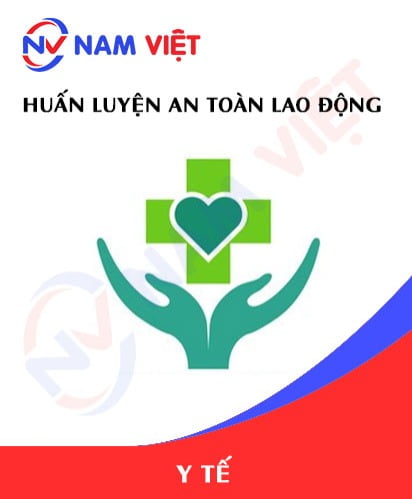
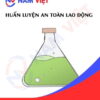
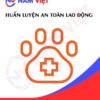



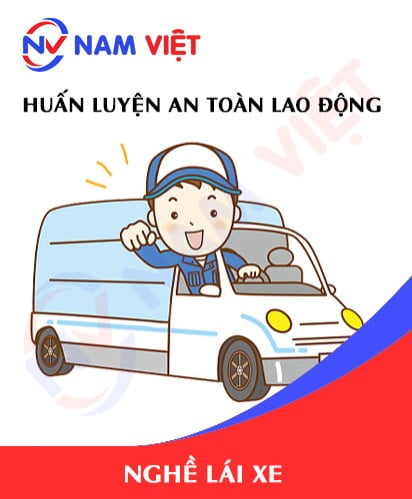
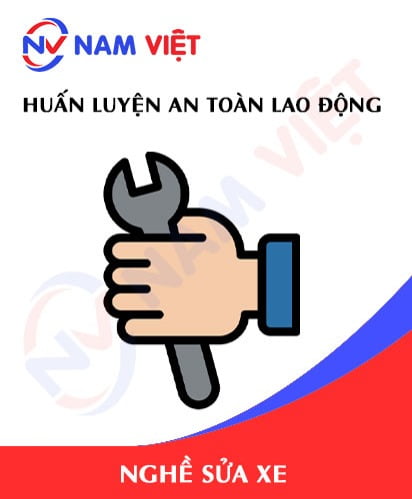
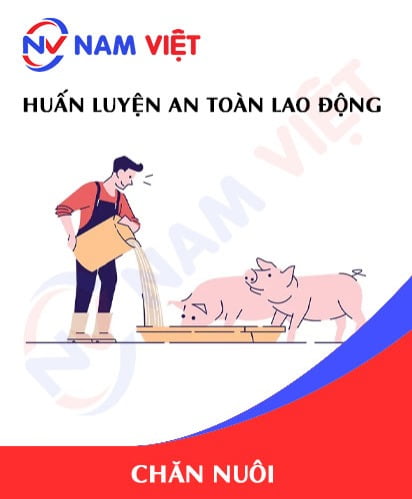
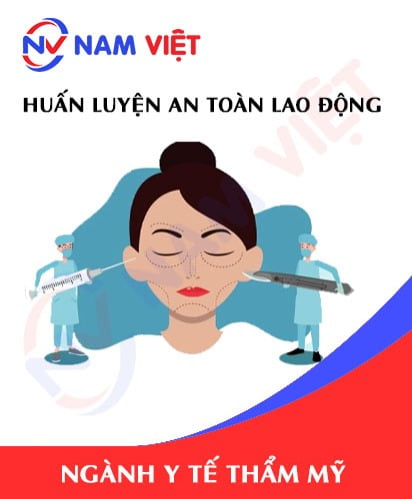
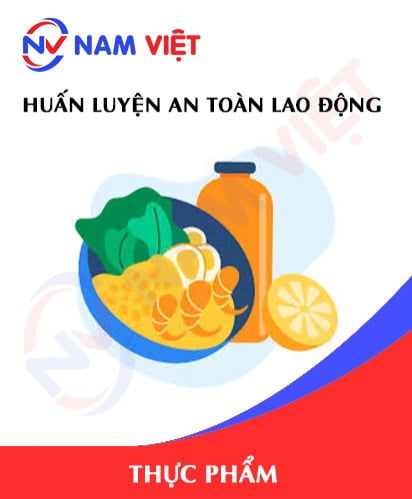
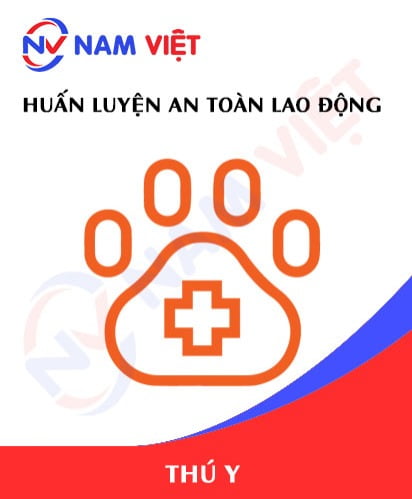
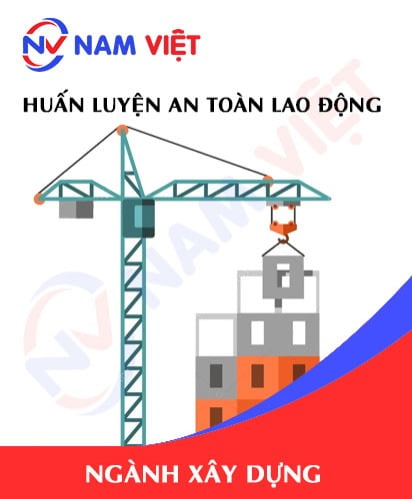
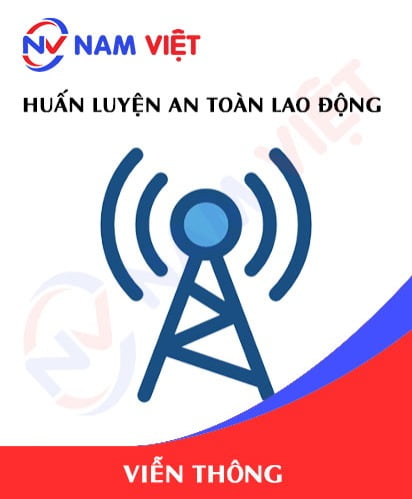
namchinh.haiphong341
Cảm ơn trung tâm nhé! hài lòng lắm